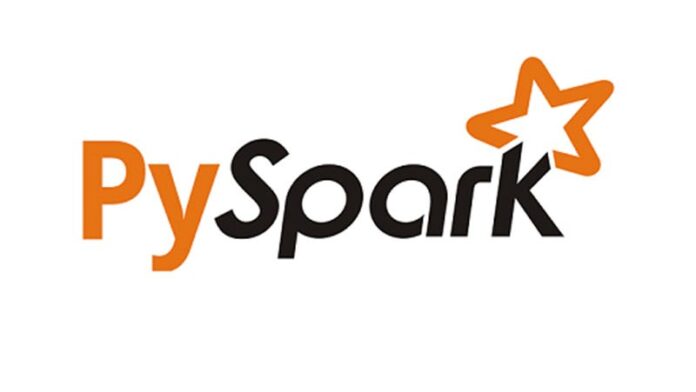In Apache Spark, a broadcast join is a join operation used when one of the joined tables is small enough to be broadcasted to all the worker nodes in a cluster. By broadcasting the smaller table, Spark can avoid shuffling the larger table over the network, resulting in significant performance improvements for certain types of join operations.
In a broadcast join, the smaller table is first broadcasted to all the worker nodes in the cluster, where it is cached in memory. Then, the larger table is partitioned and shuffled across the worker nodes, and each partition is joined with the smaller table in memory. Since the smaller table is already cached in memory on each worker node, it is unnecessary to fetch it over the network during the join operation.
Broadcast joins are most effective when the smaller table is significantly smaller than the available memory on each worker node. If the smaller table is too large to fit in memory, a broadcast join may not be feasible, and a different join strategy should be used.
To perform a broadcast join in Spark, you can use the broadcast() method to create a broadcast variable for the smaller table and then use the join() technique to join the larger table with the broadcast variable. Here is an example in Python:
# Create a DataFrame for the smaller table
small_table = spark.createDataFrame([(1, 'A'), (2, 'B'), (3, 'C')], ['id', 'value'])
# Create a DataFrame for the larger table
large_table = spark.createDataFrame([(1, 'X'), (2, 'Y'), (3, 'Z')], ['id', 'value'])
# Create a broadcast variable for the smaller table
broadcast_table = broadcast(small_table)
# Perform a broadcast join between the two tables
result = large_table.join(broadcast_table, 'id', 'inner')
# Show the resulting DataFrame
result.show()In this example, the small_table DataFrame has three rows, while the large_table DataFrame has three rows. Since the small_table DataFrame is small enough to fit in memory; we create a broadcast variable using the broadcast() method. Then, we perform a join between the large_table DataFrame and the broadcast variable using the join() technique. Finally, we show the resulting DataFrame, which contains only the rows where the id column matches between the two tables.
Broadcast Hash Join
In Apache Spark, a broadcast hash join is a specific type of broadcast join used when joining two large tables on a common key. Spark uses a hash table in a broadcast hash join to partition the smaller table into small buckets and then broadcasts each bucket to all the worker nodes in a cluster. The larger table is then partitioned and shuffled across the worker nodes, and each partition is joined with the corresponding buckets of the smaller table in memory.
The essential advantage of a broadcast hash join is that it reduces the amount of data that needs to be shuffled over the network, which can lead to significant performance improvements over other join strategies. However, it is essential to note that a broadcast hash join is only effective when the smaller table is significantly smaller than the available memory on each worker node and when the join condition is an equi-join (i.e., the join condition involves an equality comparison).
To perform a broadcast hash join in Spark, you can use the join() method with the broadcast() method to create a broadcast variable for the smaller table. Here is an example in Python:
# Create a DataFrame for the smaller table
small_table = spark.createDataFrame([(1, 'A'), (2, 'B'), (3, 'C')], ['id', 'value'])
# Create a DataFrame for the larger table
large_table = spark.createDataFrame([(1, 'X'), (2, 'Y'), (3, 'Z'), (4, 'W')], ['id', 'value'])
# Partition the smaller table into buckets and broadcast each bucket
buckets = small_table.repartition(2, 'id').rdd.map(lambda x: (x.id, x)).collectAsMap()
broadcast_buckets = spark.sparkContext.broadcast(buckets)
# Join the larger table with the broadcast variable
result = large_table.rdd.map(lambda x: (x.id, x)). \
mapPartitions(lambda x: ((k, (x[0], x[1])) for k in x if k in broadcast_buckets.value)). \
join(broadcast_buckets.value). \
map(lambda x: (x[1][0][0], x[1][0][1], x[1][1].value)). \
toDF(['id', 'value1', 'value2'])
# Show the resulting DataFrame
result.show()In this example, the small_table DataFrame has three rows, while the large_table DataFrame has four rows. We partition the small_table DataFrame into two buckets using the repartition() method, then broadcast each bucket using the broadcast() method. We then join the large_table DataFrame with the broadcast variable using the join() method. Finally, we map the resulting RDD to a DataFrame and show the result. Note that this example uses the lower-level RD API to perform the join rather than the higher-level DataFrame API to control the join process explicitly.
Query Optimizer HINTS
In Apache Spark, several types of join hints can be used to guide the query optimizer on how to perform a join. Some of the standard join hints are:
- Broadcast Join: A broadcast join can be used when one of the join tables is small enough to fit in memory on all worker nodes. In this case, Spark broadcasts the smaller table to all worker nodes and performs the join in-memory. The hint for a broadcast join is BROADCAST or broadcast.
- Shuffle Hash Join: A shuffle hash join can be used when the join tables are both large and the join keys have a skewed distribution. In this case, Spark partitions the join tables using a hash function on the join keys, shuffles the data across the network, and performs the join locally on each worker node. The hint for a shuffle hash join is SHUFFLE_HASH or shuffle_hash.
- Shuffle Sort Merge Join: A shuffle sort merge join can be used when the join tables are both large and the join keys have a non-skewed distribution. In this case, Spark sorts the data by the join keys, shuffles the data across the network, and performs the join using a merge algorithm. The hint for a shuffle sort merge join is SHUFFLE_MERGE or shuffle_merge.
- Broadcast Nested Loop Join: A broadcast nested loop join can be used when one of the join tables is small enough to fit in memory on the driver node. In this case, Spark broadcasts the smaller table to the driver node and performs the join using a nested loop algorithm. The hint for a broadcast nested loop join is BROADCAST_NL or broadcast_nl.
- Shuffle Nested Loop Join: A shuffle nested loop join can be when the join tables are both small enough to fit in memory on the driver node. Spark performs the join using a nested loop algorithm on the driver node. The hint for a shuffle nested loop join is
SHUFFLE_NLorshuffle_nl.
It’s important to note that join hints should be used judiciously and only when necessary, as they can significantly impact query performance and sometimes lead to suboptimal execution plans. It’s generally recommended to let Spark choose the best join algorithm based on the available statistics and metadata and to use hints only when a specific performance issue needs to be addressed.
Limits on the Broadcast
The maximum size of a table that can be used for a Broadcast Join in Apache Spark depends on several factors, such as the available memory on the worker nodes, the number of worker nodes, and the size of other objects cached in memory. However, as a general rule, a table should be small enough to fit comfortably in memory on all worker nodes to be a good candidate for a Broadcast Join.
In Spark, the default size limit for broadcast variables is 10MB, which means that any table that can fit into a 10MB variable should be a good candidate for a Broadcast Join. However, this limit can be adjusted using the spark.sql.autoBroadcastJoinThreshold configuration parameter. For example, if you set this parameter to 100MB, Spark will consider any table smaller than 100MB as a potential candidate for a Broadcast Join.
It’s important to note that using a Broadcast Join for large tables can lead to memory pressure on the worker nodes and cause performance issues. Therefore, it’s generally recommended to use Broadcast Joins only for small tables or when the table size is within the limits of the available memory on the worker nodes. If the table is too large to be broadcasted, other join algorithms, such as Shuffle Hash Join or Shuffle Sort Merge Join, can be used instead.
AVOID THE SHUFFLE
In Apache Spark, a shuffle operation is a costly data exchange operation required when the data must be redistributed across the cluster, typically during the aggregation or joining of large datasets. A shuffle can be triggered by several factors, such as:
- A repartition operation: When you use the
repartitionmethod on a DataFrame or RDD to change the number of partitions, a shuffle is performed to redistribute the data across the new partitions. - A groupBy or aggregate operation: When you perform a groupBy or aggregate operation on a DataFrame or RDD, a shuffle is performed to group the data by the specified keys and aggregate the values.
- A join operation: When you perform a join operation between two DataFrames or RDDs, a shuffle is performed to redistribute the data based on the join keys and to perform the join operation.
- A window function: When you use window functions such as
row_numberorrankon a DataFrame or RDD, a shuffle is performed to partition the data by the specified window partitioning criteria. - A sortBy operation: When you perform a sortBy operation on a DataFrame or RDD, a shuffle is performed to sort the data based on the specified sorting criteria.
It’s important to note that shuffles are expensive operations that can significantly impact query performance, especially for large datasets. Therefore, minimizing the number of shuffles is generally recommended by carefully designing the data processing pipeline and using techniques such as partitioning, caching, and broadcasting where appropriate.











